The hooded false morel (Paragyromitra infula) is part of the infamous false morel family. Other members in this family can be confused with true morels, but the hooded false morel is pretty distinctive and un-morel-like. The edibility of this species is questionable, but even if we can’t (don’t) eat it, it’s still a fun find while out foraging.
- Scientific Name: Gyromitra infula, Paragyromitra infula
- Common Names: Hooded False Morel, Elfin Saddle, Bay Gyromitra, Saddle-Shaped False Morel
- Habitat: Dead and decaying conifers
- Edibility: It’s complicated
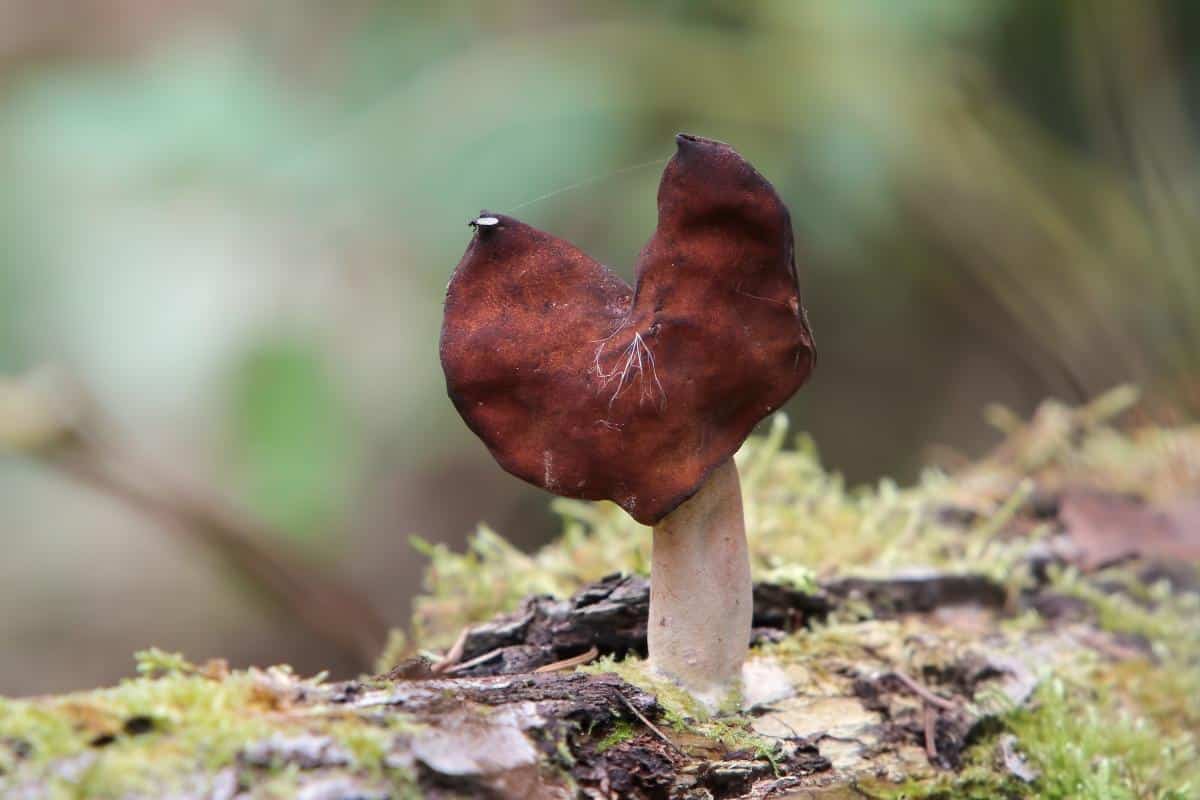
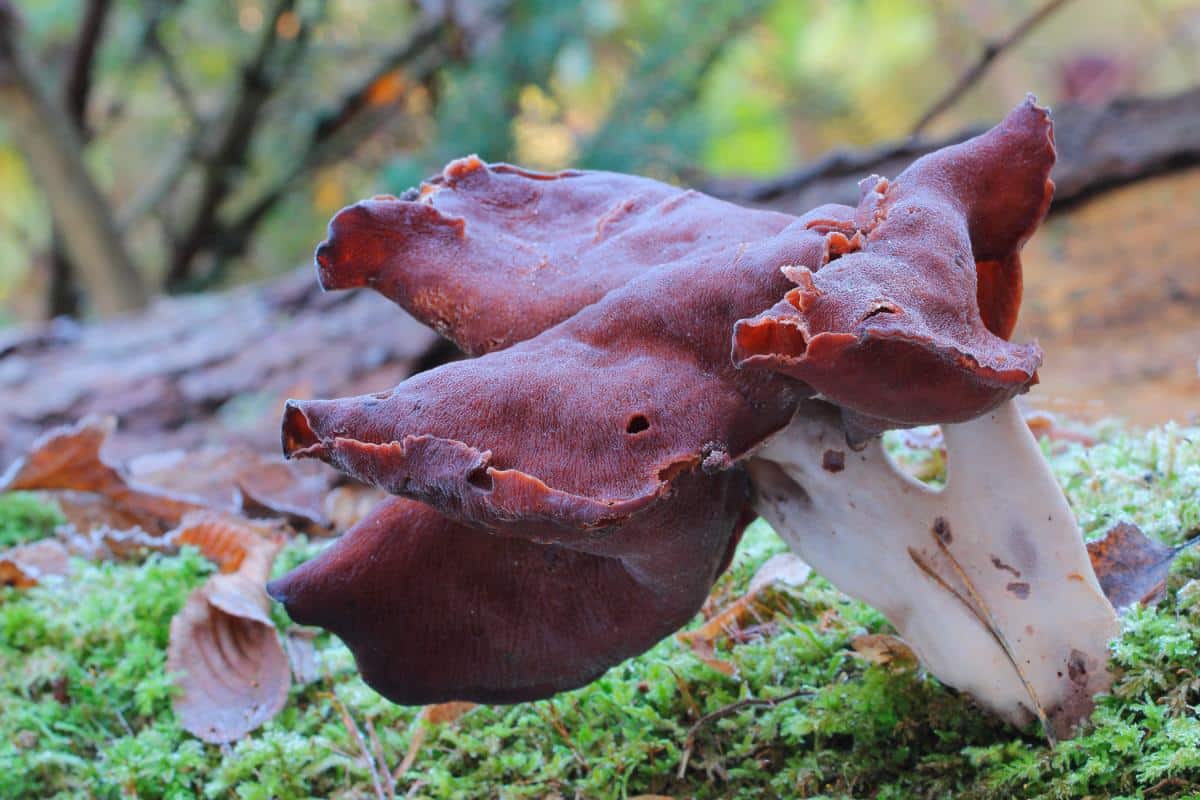
Jump to:
All About The Hooded False Morel
This false morel species doesn’t look like a true morel at all. It looks like a fortune cookie perched elegantly on top of a thin white pole. Maybe the shape of the fortune cookie was inspired by this mushroom?
Hooded false morels are late summer and fall mushrooms, which is the opposite of other false morels and true morels. Morels and most other false morel Gyromitra species are specifically spring species. This makes it a little easier to identify the mushroom, even though that fortune cookie look is hard to mistake.
Gyromitra infula was first described in 1774 by German mycologist Jacob Christian Schäffer as Helvella infula. Later, in 1886, French mycologist Lucien Quélet transferred the species to the genus Gyromitra. The genus name “Gyromitra” is derived from the Greek words “gyros,” meaning round, and “Mitra,” meaning headband. The epithet “infula” is derived from the Latin word for a heavy band of twisted wool worn by Roman officiants at sacrifices.
A note must be added about one of the common names for this species, elfin saddle. Elfin saddle is a common name applied to other related fungi, the Hellvella elfin saddles. The use of this common name for two related, yet quite distinct, species causes a bit of confusion. We prefer hooded false morel for this species since it eliminates some of the confusion.
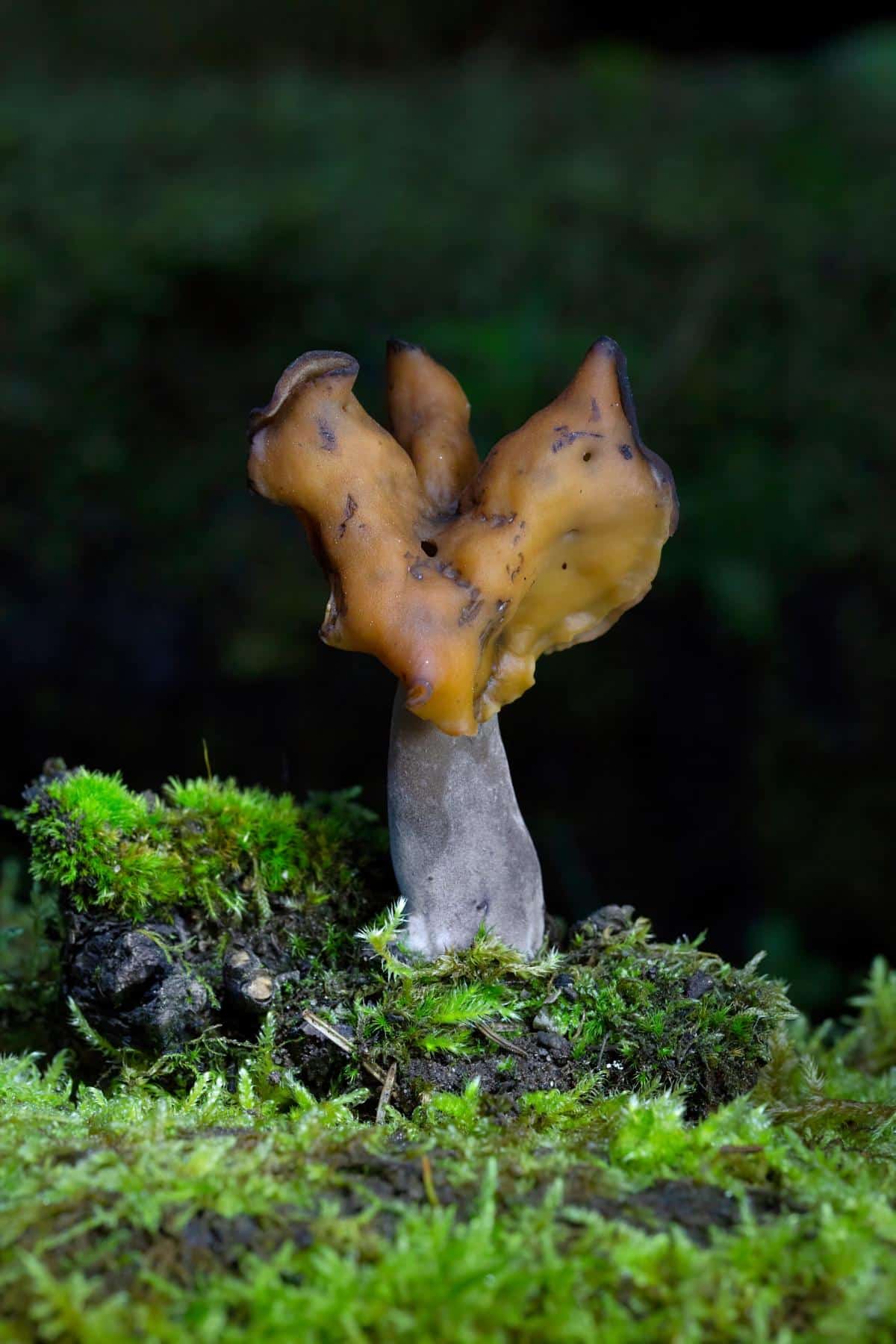
Hooded False Morel Identification Guide
Season
It appears in late summer and autumn, although it can be found in winter and spring in coastal California.
Habitat
This false morel is widespread in North America. It prefers boreal, montane, and coastal forests. It grows on the dead and decaying wood of conifer trees. On the east coast, it grows almost exclusively on trees and dead wood. On the West Coast, though, it is commonly found growing from the ground near dead and decaying conifer stumps and logs. The west coast species also usually get significantly bigger than their east coast cousins.
(Side note: The east coast and west coast versions of this fungi might be different species. For now, they are combined until further research clarifies things.)
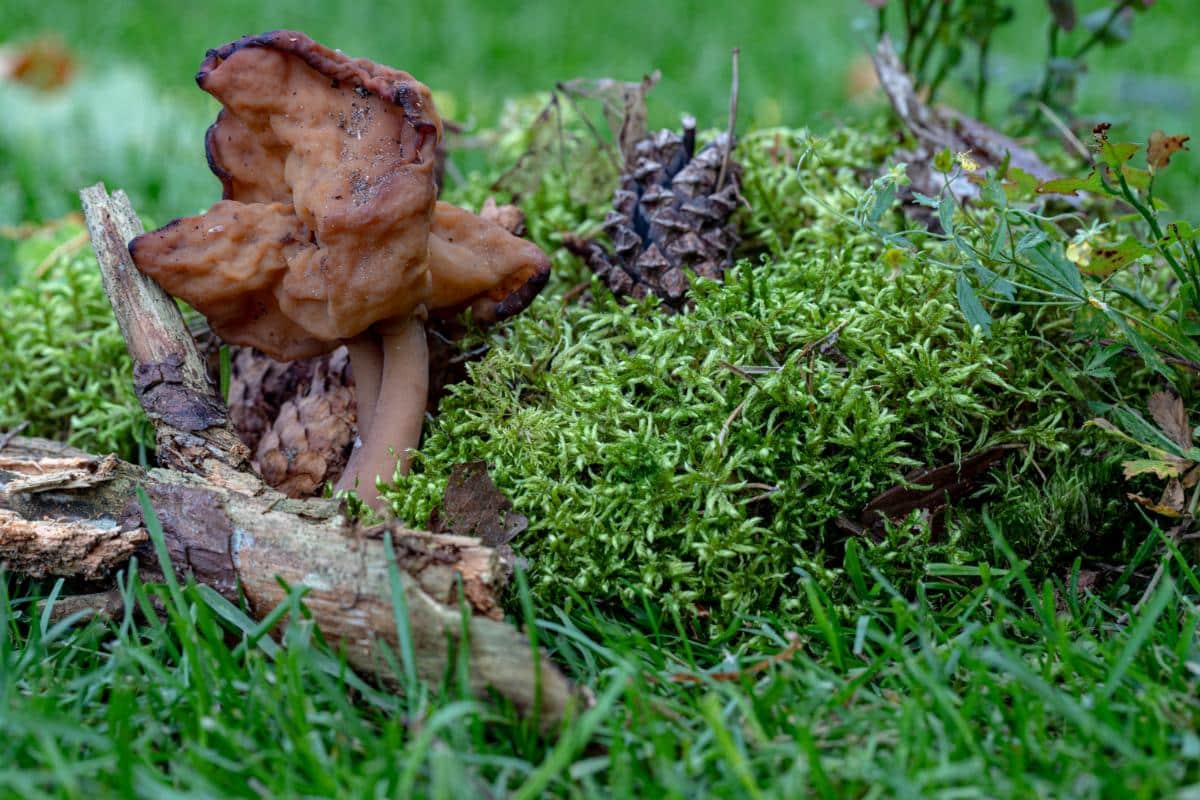
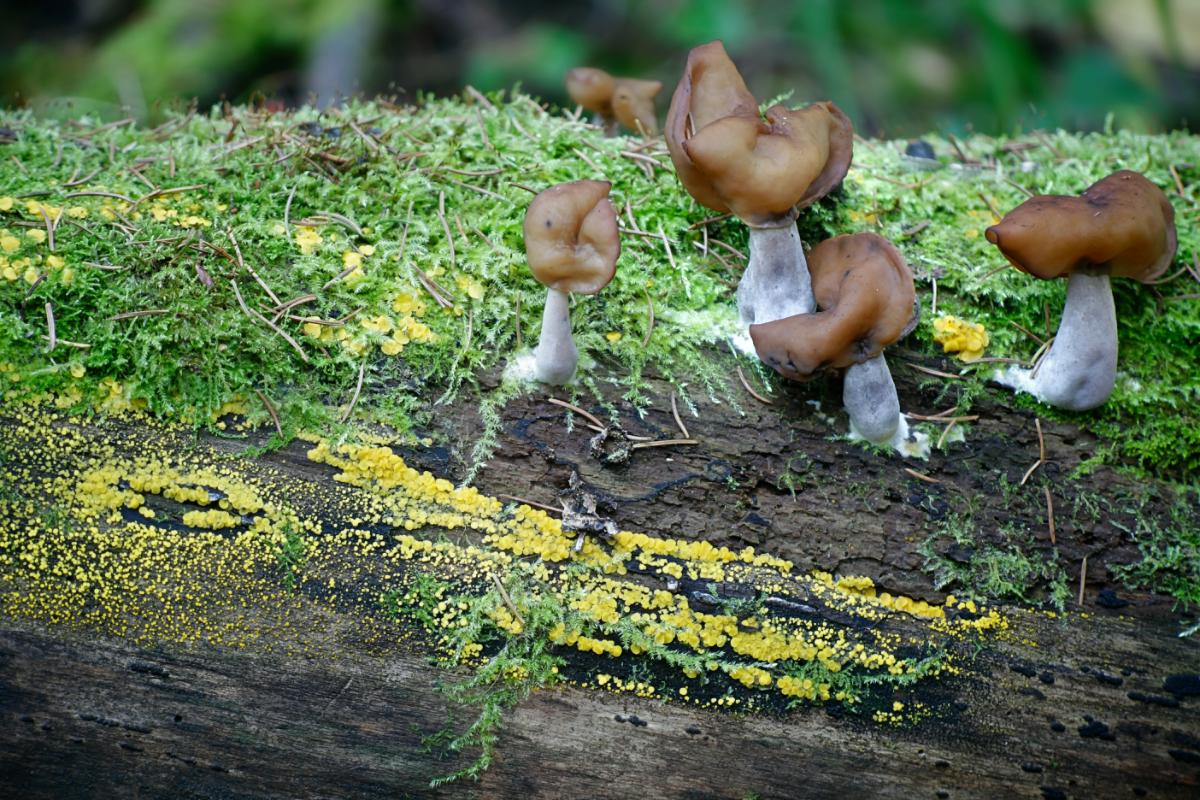
Identification
Cap
The cap of the hooded false morel ranges from 1 to 3.25 inches tall and 1-3.5 inches wide. It is saddle-shaped, with two lobes that are often prominently raised above the center of the stem. The cap is usually wavy, irregularly bumpy, or lightly wrinkled. It is not so wrinkled it looks brainlike, like with other false morel species. It might be smooth or very lightly hairy.
Hooded false morel caps vary in color and can be yellowish-brown, burgundy-brown, reddish-brown, or dark brown. Their overall shape really varies, too, with many the classic saddle or fortune cookie shape while others are convoluted and more blob-like but with definition.
Pores
The hooded false morel does not have gills. Instead, it has a smooth lower cap surface that is paler, finely dusted, and sometimes ingrown with the stem where it connects.
Stem
The stem of this mushroom ranges from .75- 2.25 inches long. It is equal in length the entire way or enlarged at the base. It also can be round or compressed in shape.
This mushroom’s stem surface is usually smooth, but it may be covered in very fine hairs. It is colored like the cap or lighter, varying from brown hues to shades of lilac.
Flesh
The flesh of the hooded morel is thin and brittle, with a whitish to brownish color. Inside the stem, the flesh might be chambered (tunnels through the flesh). This is a delicate species that breaks apart easily.
Odor
There is no distinctive odor.
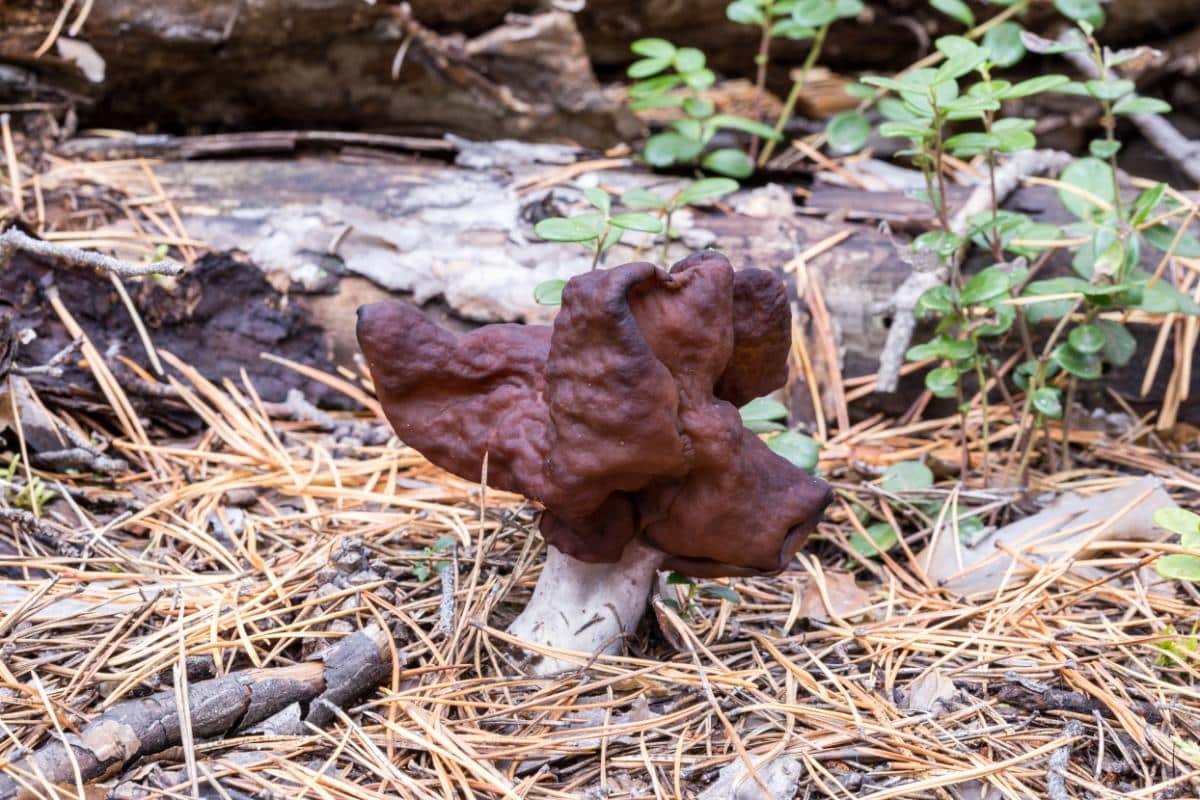
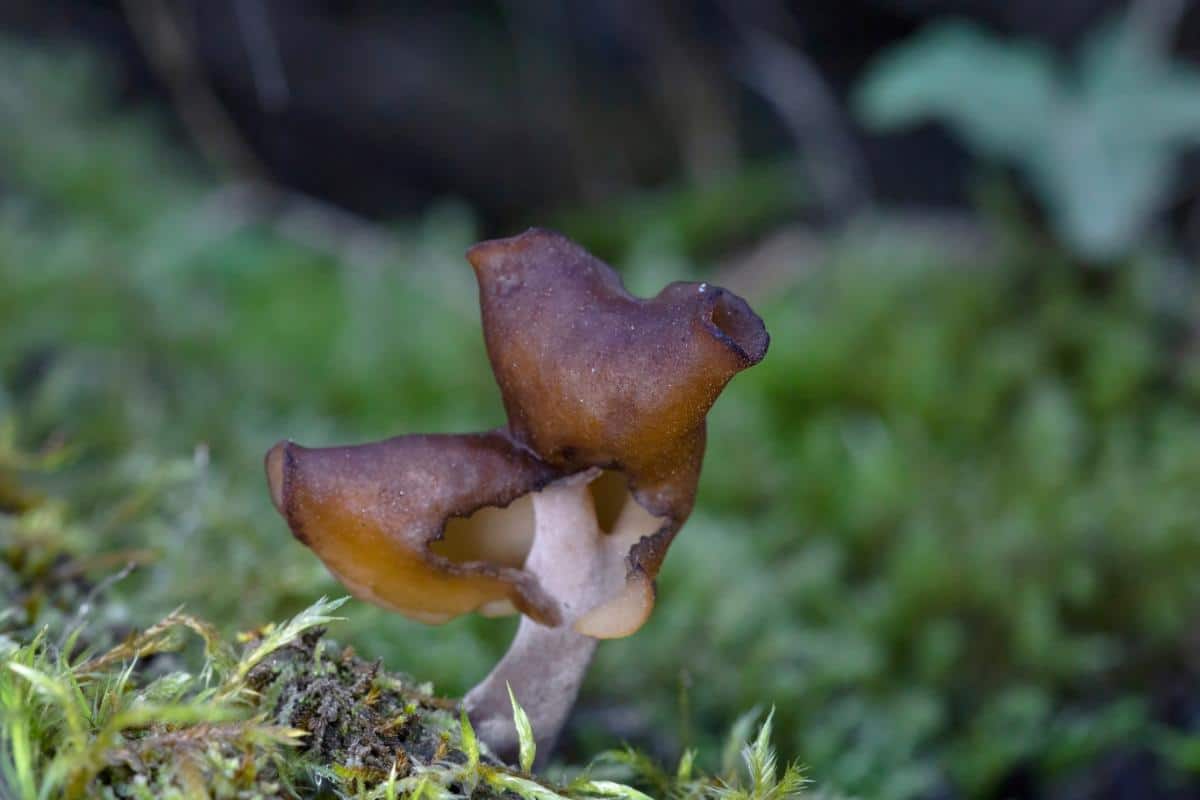
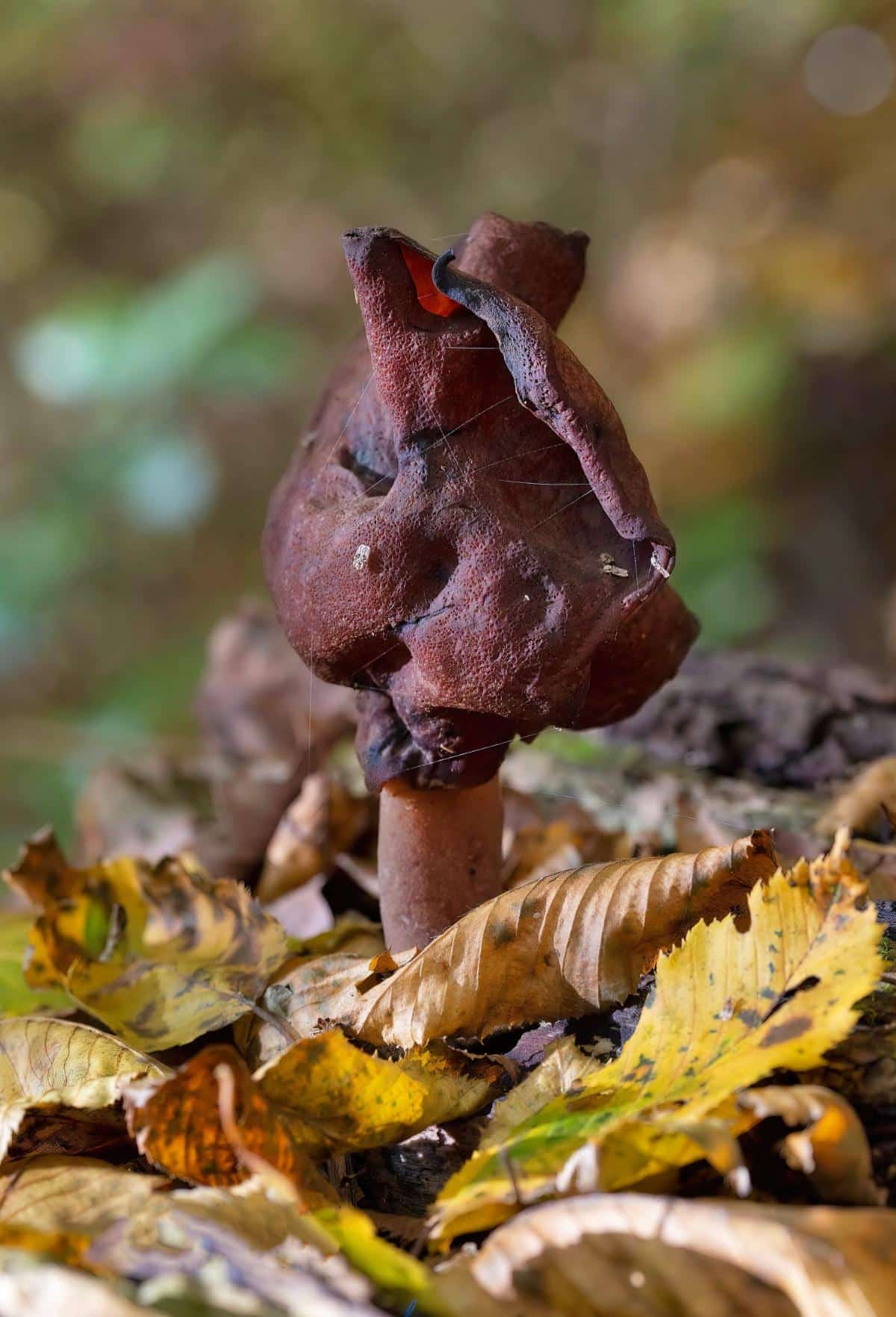
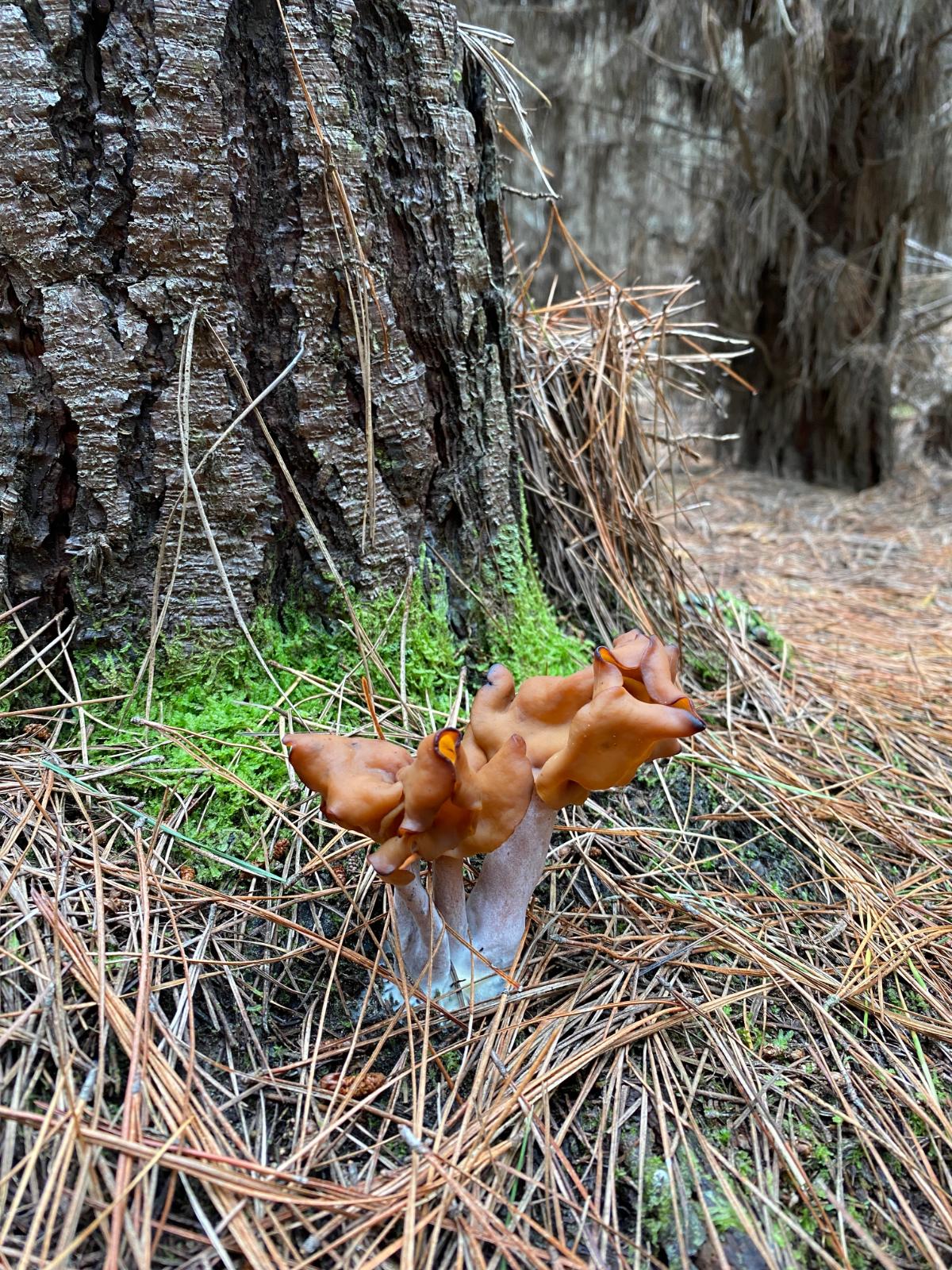
Hooded False Morel Lookalikes
The Other Hooded False Morel (Gyromitra ambigua)
This species is nearly identical in appearance to Gyromitra infula but has more pronounced purple tints in the stem. Microscopic examination is often necessary to distinguish between the two species, as Gyromitra ambigua has larger spores.
Elfin Saddles (Helvella spp)
These fungi cousins share a common name and are often confused with hooded false morels. They also look like saddles or two big ears sitting atop a slender stem. There are some key differences, though.
Helvella species, like the White Elfin Saddle, are generally grayer or whiter – they don’t have the deep brown or burgundy-brown caps of the hooded false morel. Also, their stems tend to be deeply vertically grooved, and their cap “wings” generally swoop downward instead of up like the hooded false morel.
There are a few brown Helvella species though that have smooth stems and can be very confusing: Helvella compressa and Helvella elastica. These species have greyer caps, though, and lighter colored stems.
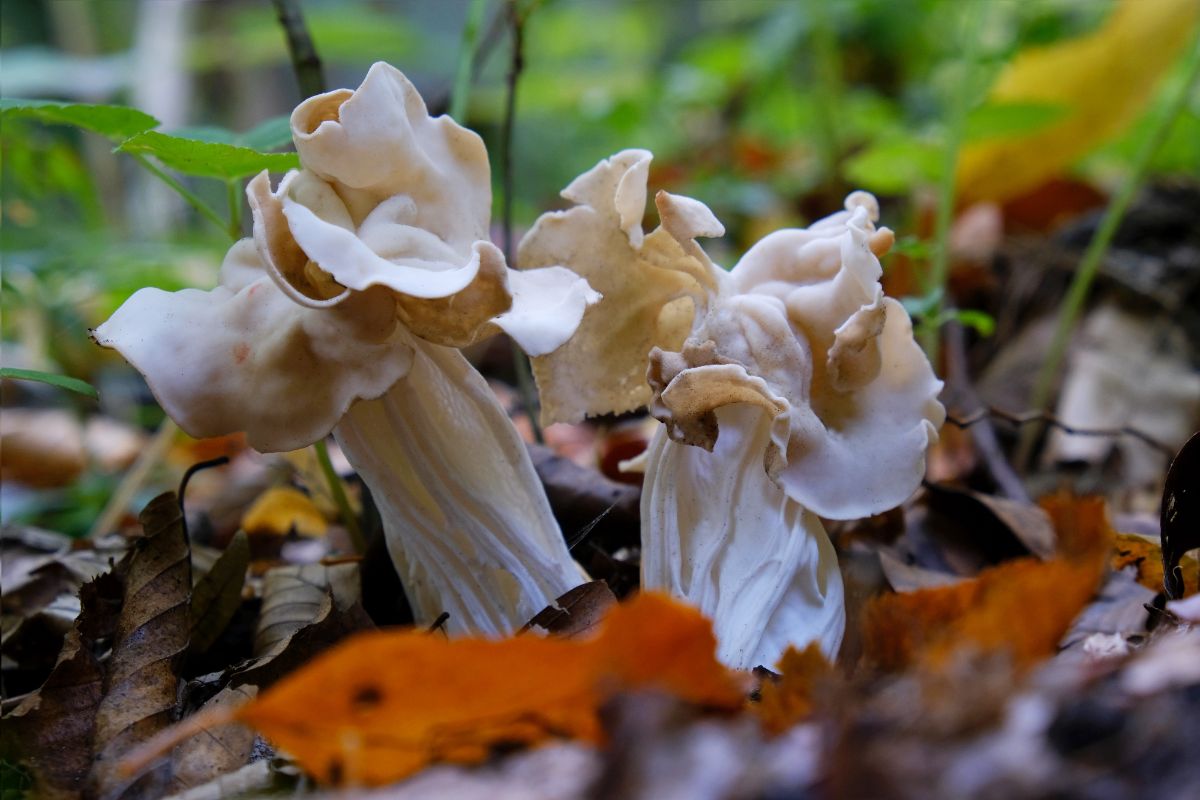
Elephant Ear False Morel (Gyromitra brunnea)
The elephant ear false morel has a similar cap shape, but has a wide, dense stem that is very different from the hooded false morel’s delicate one. The lobes of the elephant ear false morel are also usually fused together at the seams, which is a unique attribute to it.
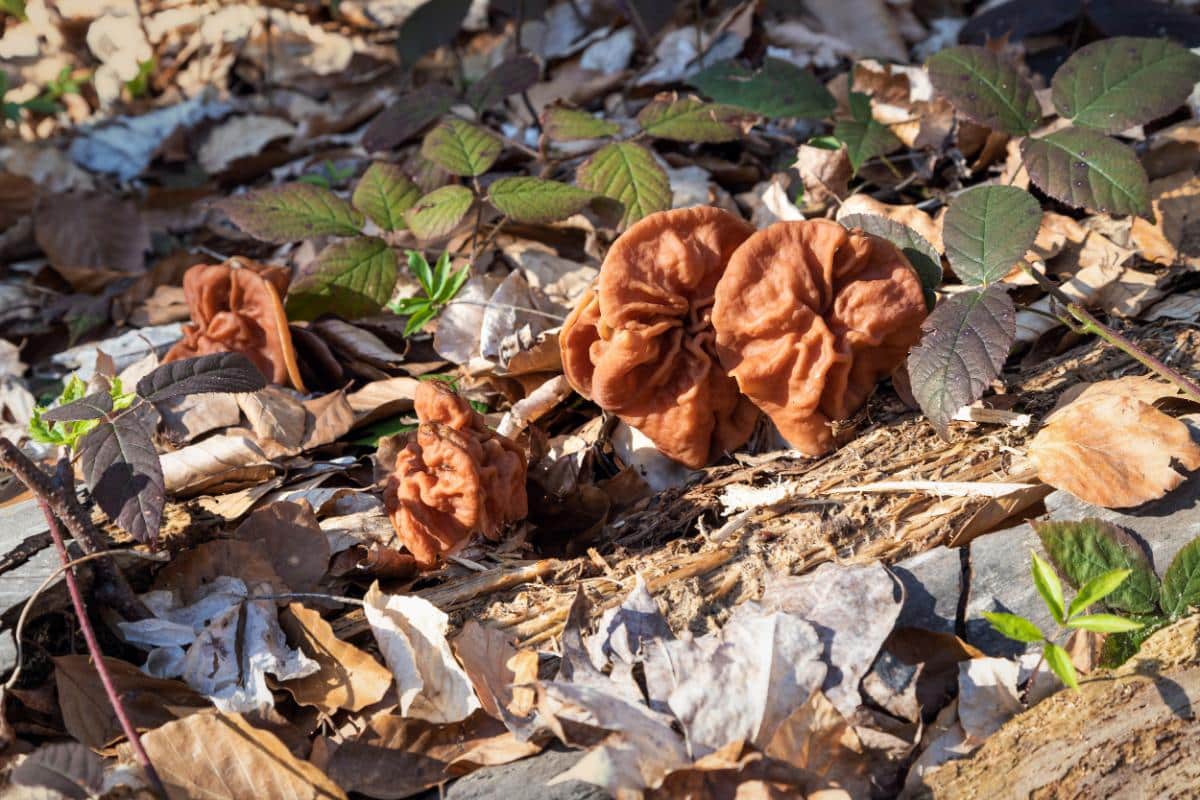
Hooded False Morel Edibility
As with all the false morels, this issue is complicated. Since it is part of the Gyromitra species, it has been thought to contain the toxic components and therefore be inedible. Or, edible with lots of parboiling.
There is a limited amount of literature about eating this specific species, in contrast to the other false morel species. There are no track records to follow to use to advise others. There are no reported poisonings in North America from 2006-2020. (2006-2017, 2018-2020)
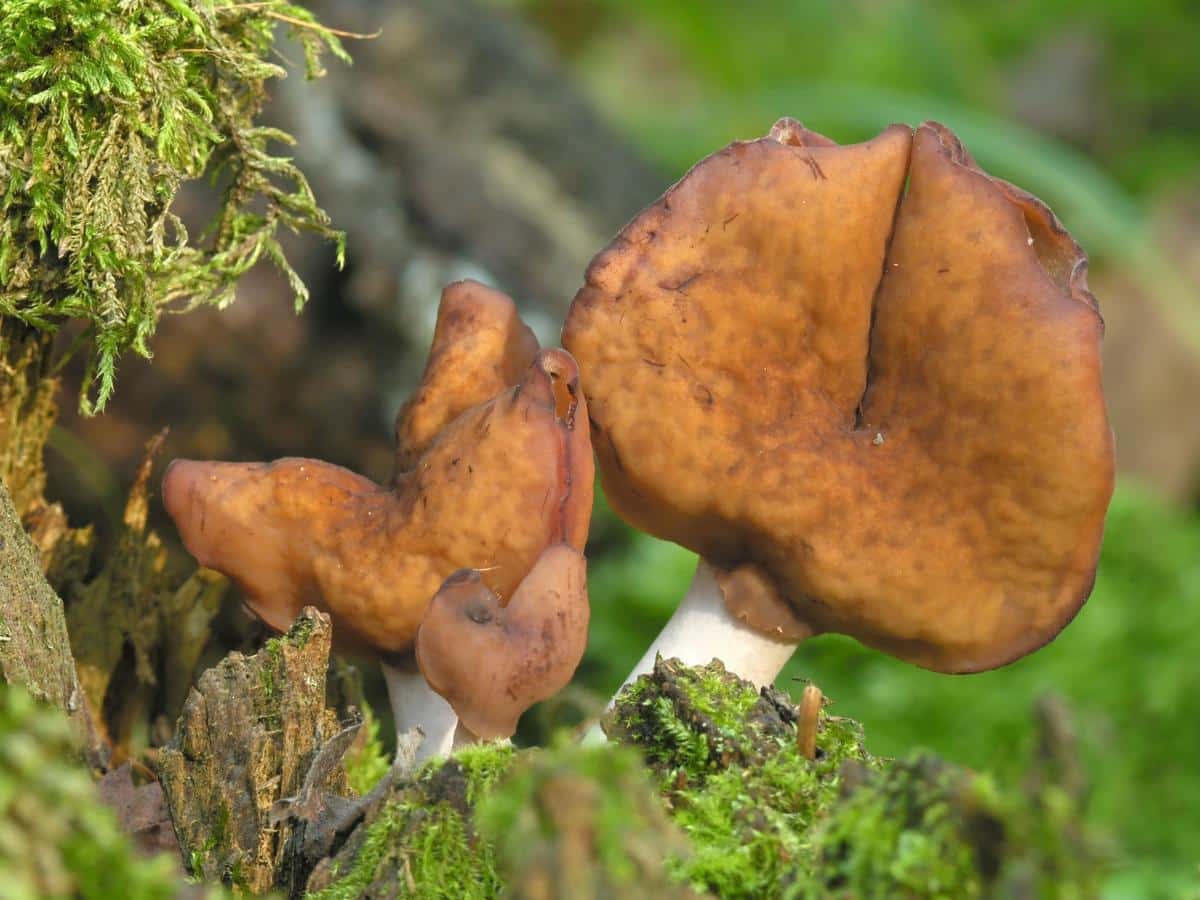
But, here’s the hitch. Gyromitra infula, the hooded false morel, is considered by many to be part of the Gyromitra esculanta group. And, the Gyromitra esculenta species is considered to be the most dangerous, which high levels of toxins. Whether the hooded morel belongs associated with its toxic brethren is unknown. It’s possible/likely that the hooded false morel got included in the highly toxic group because it looks so much like Gyromitra ambigua, which is considered definitely toxic (but also debated!).
If you’re unfamiliar with the toxicity situation, certain Gyromitra species contain a chemical called gyromitrin. Gyromitrin is water soluble and easily converted into monomethylhydrazine (MMH) in the body. Monomethylhydrazine is highly toxic and carcinogenic, and it is also used as a component of fuel for rockets. The amount of gyromitrin in any species varies by location, and a host of other variables that still are not understood entirely.
In general, Gyromitra esculenta is known to be the most hazardous due to its high levels of Gyromitrin/hydrazine. This is perplexing when considering that G. esculenta may be the most commonly ingested Gyromitra worldwide. In Scandinavian countries and Germany, you can find this “toxic” mushroom for sale in markets and even packaged in cans for sale at the grocery store.
In Europe, there are reports of poisonings, but they are highly varied and unpredictable. And not nearly as many as you’d think with how seemingly common it is to eat them. These reports, again, usually revolve around Gyromitra esculenta, not the hooded false morel.
In these reports, some get very sick after eating false morels, and some even die. However, other people, eating the exact same meal, exhibited no symptoms at all. Still more, others would experience poisoning after previously eating the fungus for years without issues. This leads to another big issue with gyromitrin.
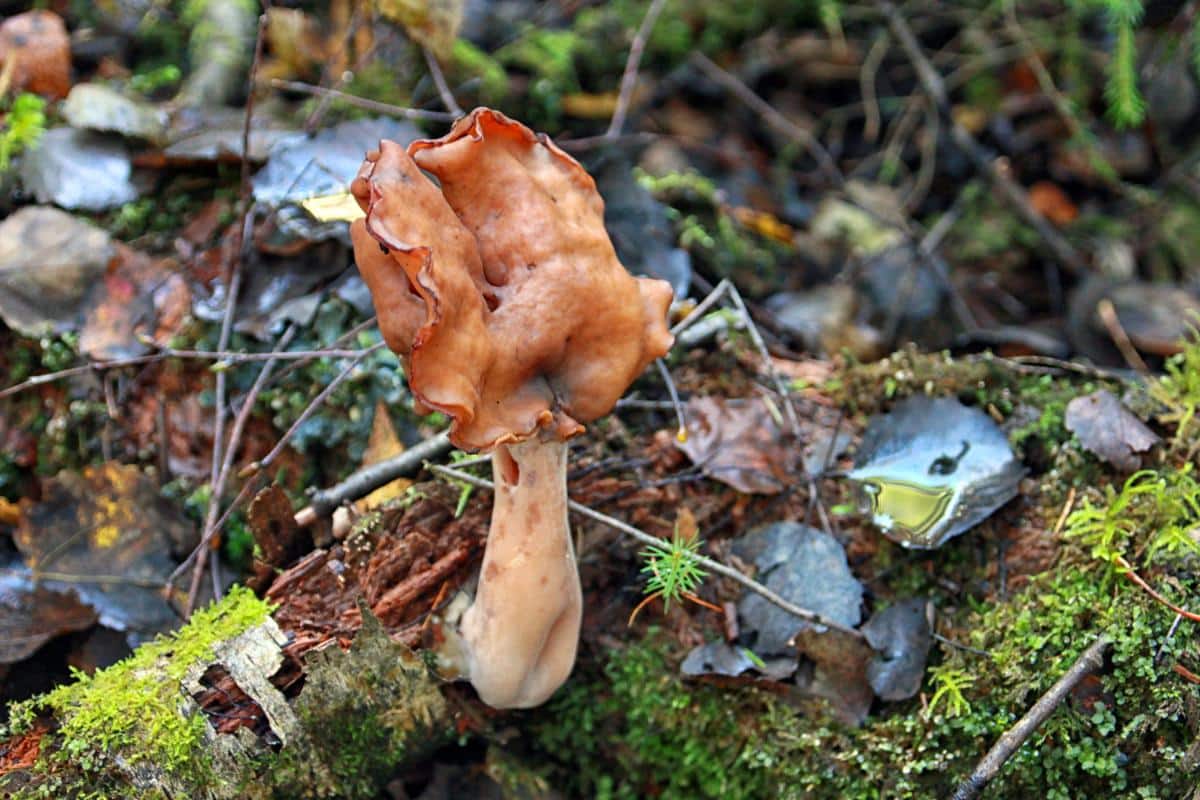
In addition to the issue of whether any Gyromitra species contain toxins and how much, there is another problem. Recent studies show that gyromitrin (as MMH) is a cumulative toxin. This means that its levels will build up in your body with repeated consumption. This potentially could lead to illness or even death. For us, this is a more concerning aspect compared to its immediate toxic impact.
Please keep all this in mind before eating. It may be that there isn’t much of a danger since a person rarely eats enough of these mushrooms to cause extreme danger, but it’s possible. And, with hooded false morels, the toxin levels may be low so it doesn’t really make a difference. We don’t know. More studies need to be done with humans first.
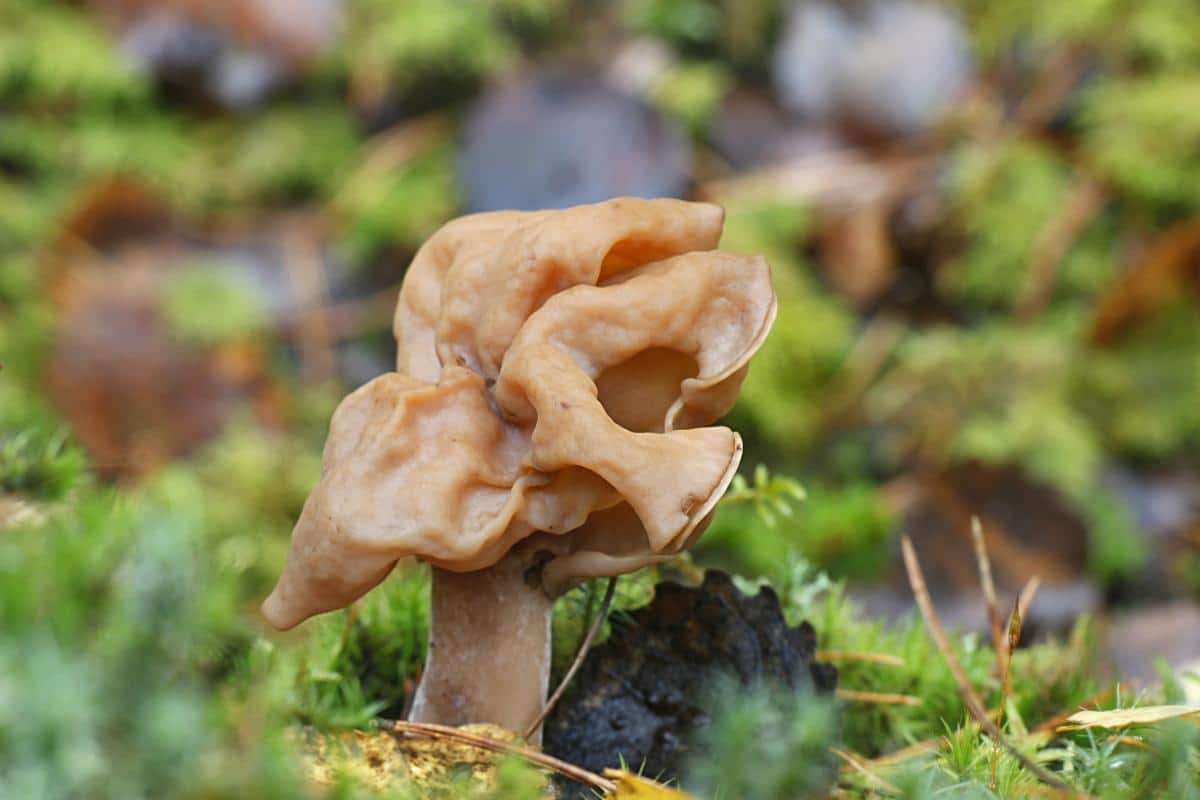
It is also important to note that cooking the mushroom may not eliminate all risks entirely, as the fumes released during cooking can also be hazardous if inhaled (also hotly debated, but we prefer caution over carelessness). Some folks report strong gas/petroleum smells and nausea when cooking Gyromitra, but this is almost always specific to Gyromitra esculenta.
If you choose to consume these mushrooms, it is essential to be familiar with the signs of gyromitrin poisoning in order to seek immediate assistance if necessary. Symptoms typically start 2-24 hours after ingestion or inhaling cooking fumes. These may include intense headaches, gastrointestinal discomfort, vomiting, and severe diarrhea. In some cases, the toxin can be more deceptive and cause harm to the red blood cells, liver, and kidneys, which can ultimately lead to death.
If you want to read deeper into the Gyromitra toxicity debate, this article published by mycologist Alden Dirks is a great place to start. While reading it, it’s important to note this was a small study with limited samples and by no means a deep in-depth dive. But, it is a very interesting start.
If you’re interested in further reading and learning more about eating false morels, check out these links.
- False Morels Demystified Facebook Group
- False Morel Mushrooms: Everything You Need To Know
- Gyromitra Mushroom Poisoning
- Historic Edibility Assessments for “False Morel”, Gyromitra esculenta
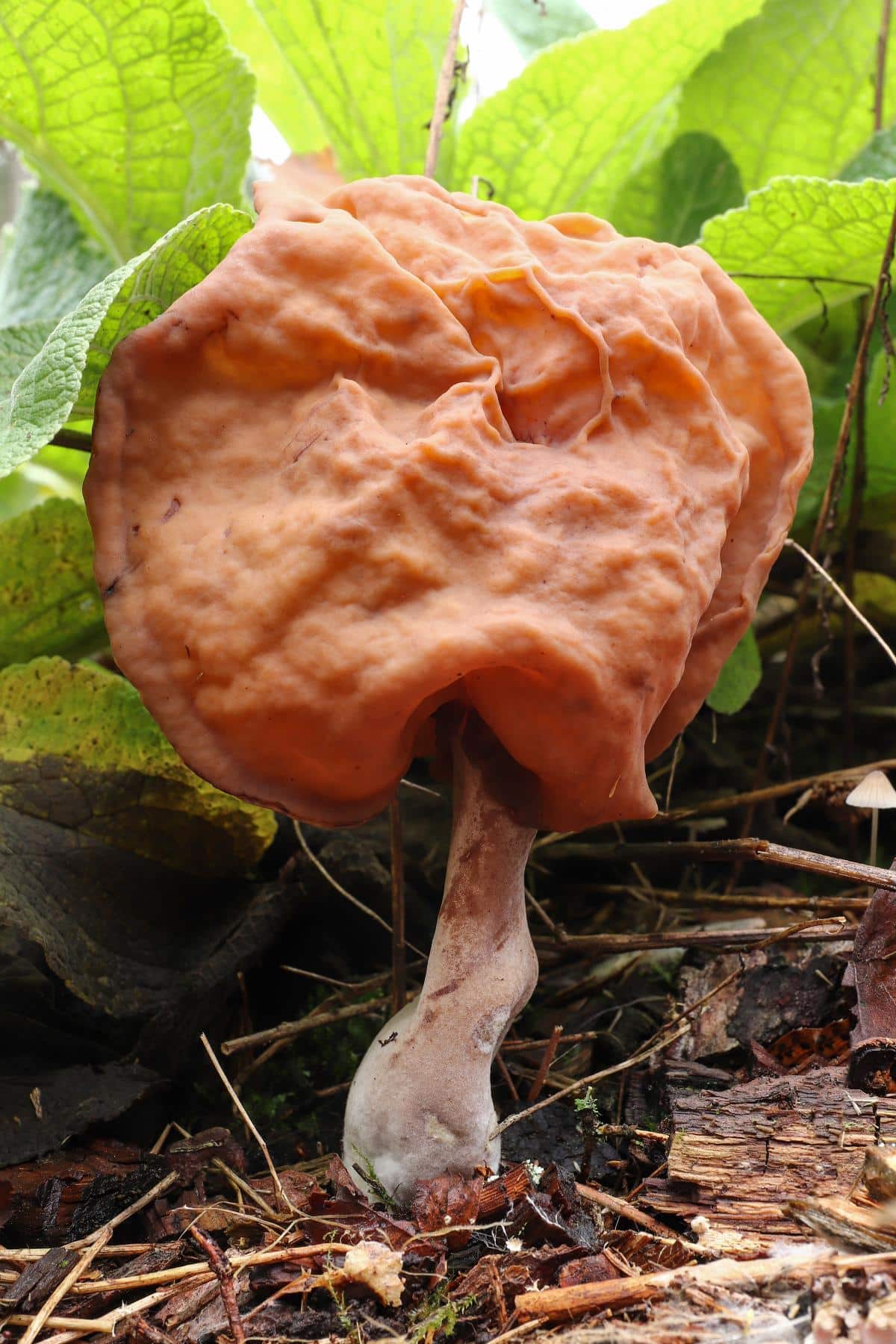
Hooded False Morel Common Questions
Are hooded false morels medicinal?
No specific information is available regarding the medicinal properties of Gyromitra infula. Further research is needed to explore any potential medicinal uses of this mushroom
Can you eat hooded false morels?
Please read the entirety of the edibility section in this article. It’s complicated and you should know all the information before deciding whether you want to eat these or not. Some people do eat them. And others have gotten quite ill from eating them. So, the jury is still out on this one. You have to determine your own risk, reward, and responsibility.





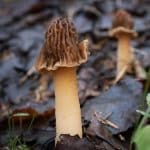
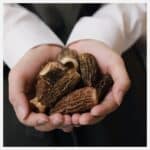
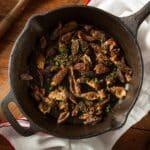
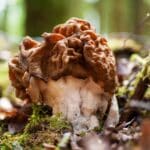
Leave a Reply